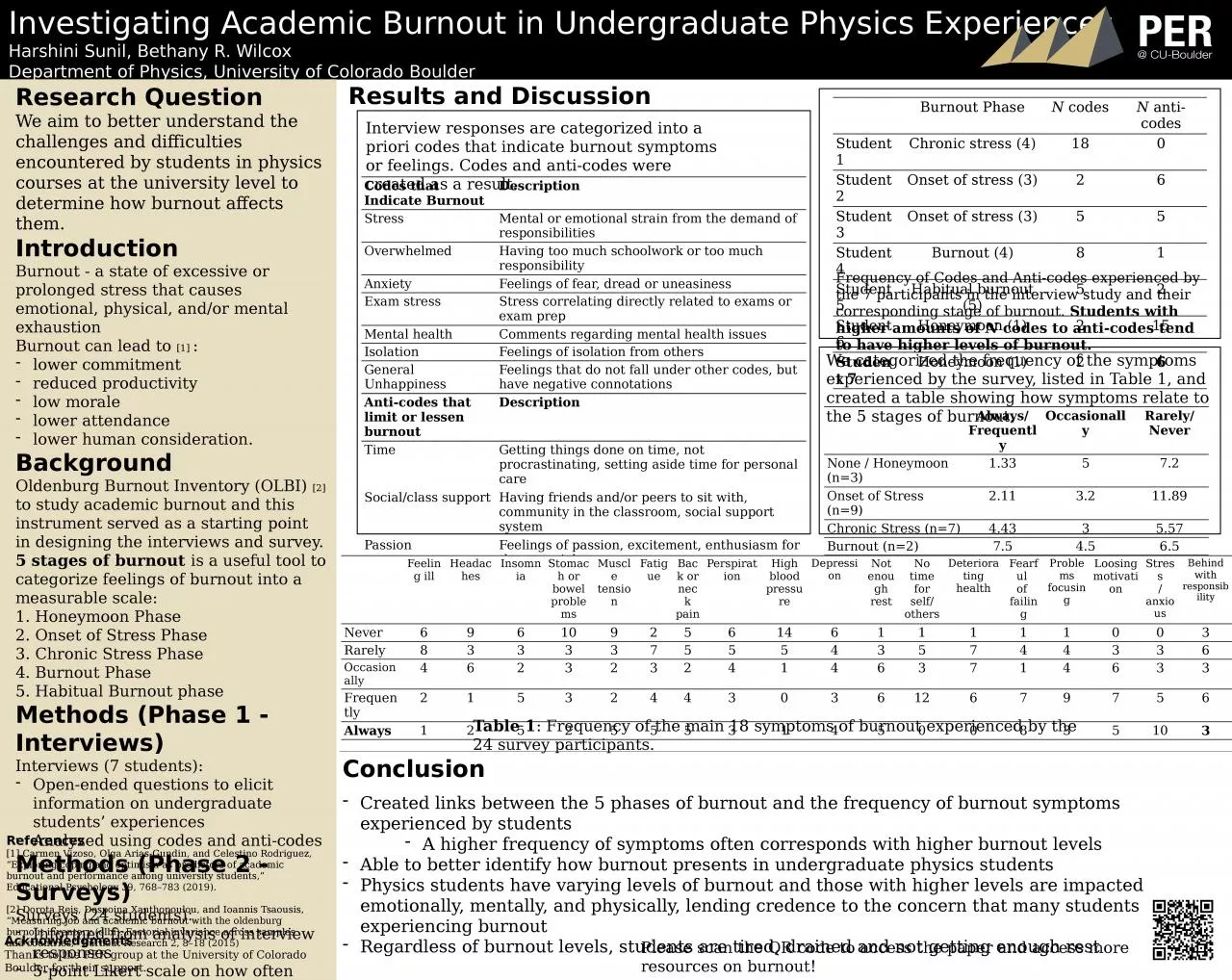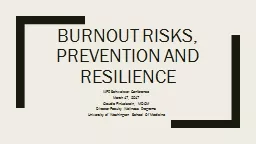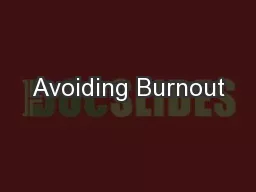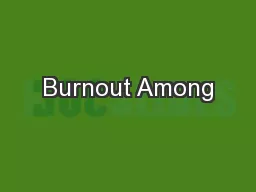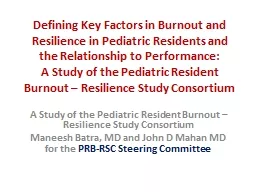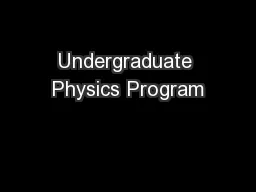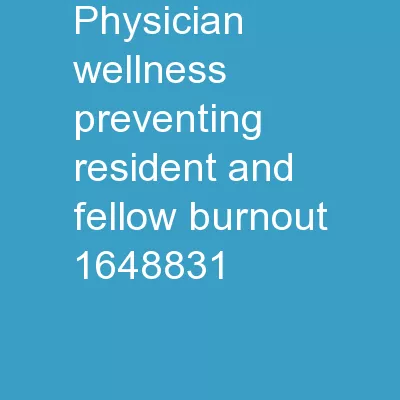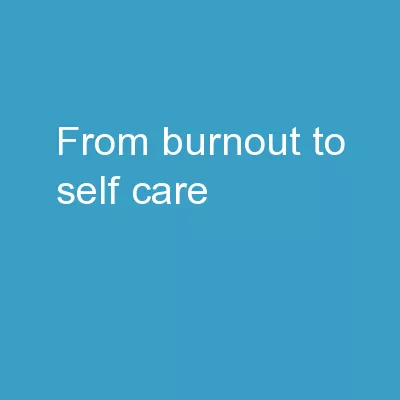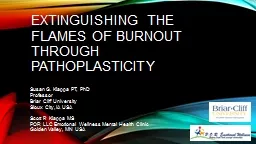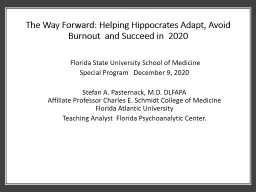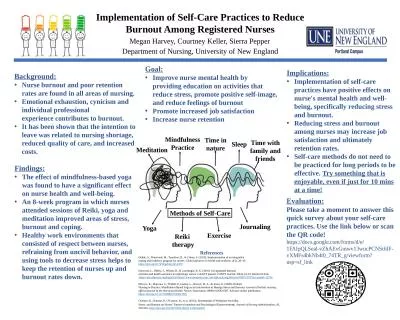PPT-Investigating Academic Burnout in Undergraduate Physics Experiences
Author : lam | Published Date : 2024-02-02
Harshini Sunil Bethany R Wilcox Department of Physics University of Colorado Boulder Research Question We aim to better understand the challenges and difficulties
Presentation Embed Code
Download Presentation
Download Presentation The PPT/PDF document "Investigating Academic Burnout in Underg..." is the property of its rightful owner. Permission is granted to download and print the materials on this website for personal, non-commercial use only, and to display it on your personal computer provided you do not modify the materials and that you retain all copyright notices contained in the materials. By downloading content from our website, you accept the terms of this agreement.
Investigating Academic Burnout in Undergraduate Physics Experiences: Transcript
Download Rules Of Document
"Investigating Academic Burnout in Undergraduate Physics Experiences"The content belongs to its owner. You may download and print it for personal use, without modification, and keep all copyright notices. By downloading, you agree to these terms.
Related Documents

